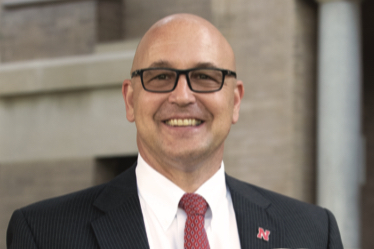
Key Drivers of Economic Vitality in Nebraska
Institute of Agriculture and Natural Resources Focus on Nebraska Economy

Every year, the Strategic Discussions for Nebraska publication highlights research and projects of faculty and staff in the Institute of Agriculture and Natural Resources (IANR). This year’s edition is focused on drivers of economic vitality across the state of Nebraska.
“When we think about community vitality, we consider the factors that influence the quality of life and the prosperity of life for people in those communities,” said Michael J. Boehm, University of Nebraska Vice President for Agriculture and Natural Resources and Harlan Vice Chancellor of IANR at the University of Nebraska–Lincoln.
Community vitality initiatives help enhance tourism, assist with sustainable natural resources, and create jobs across the state.
IANR has expanded research and projects across rural Nebraska communities and finds new ways to share this work with people most impacted.
State-wide Research, Local Impact
The work done in IANR is aimed to enhance the lives of those living within Nebraska.
“We have a responsibility in our research and discovery agenda to push the bounds and discover new information,” Boehm said. “Then, we put this new information to work in our state.”
IANR is committed to finding innovative ways to enhance the economic growth of the state. Current work being done at the university will have a critical impact on the future of agriculture and natural resources.
For instance, Chris Chizinski, associate professor in the School of Natural Resources, combines social sciences with hunting and fishing with the goal of increasing agro-tourism in rural areas of Nebraska. Small towns in Nebraska depend on the ecotourism dollars brought in by hunters and fishermen so involvement makes an impact on Nebraska’s economy and ecosystems.
Additionally, Paul Springer, professor in the Department of Child, Youth and Family Studies develops innovative ways to improve mental health in underserved and hard-to-reach populations by using technology. Springer said 88 of Nebraska’s 93 counties are deemed as shortage areas for mental health care providers and tele-mental health services allow rural Nebraskans to seek confidential mental health care.
Further, Nebraska Extension also plays an important role in the land-grant system of the university. Most Nebraska counties have an extension office where information from the university is shared. For example, the Rural Community Prosperity Initiative helps rural Nebraska communities grow economic and business opportunities, create vibrant communities, and engage their residents through various programming. Further, Nebraska Extension also engages Nebraska youth. Particularly, Nebraska 4-H provides a wide variety of opportunities to Nebraska youth such as the statewide robotics competition, gardening, baking, and showing livestock. Nebraska 4-H allows youth to engage in a variety of skills such as problem-solving, creative thinking, and entrepreneurship which help them return to Nebraska’s workforce in the future.
The impact of IANR research and projects reaches to most counties in Nebraska.
IANR Stays Strong through a Global Pandemic
Even though the world has seen drastic change through the impacts of COVID-19, Nebraska’s agricultural producers and keepers of natural resources have remained resilient.
“COVID-19 has not changed the goals of IANR,” Boehm said. “Our commitment to growing food, fuel, feed, and fiber for a growing population still stands true.”
IANR initiatives simply took on a new approach. Extension educators worked remote and conducted online meetings with growers to help fulfill their needs. Researchers on campus still have access to their labs to help find solutions to current problems. University officials work to stay ahead of the curve to assist faculty, staff, and students in all the ways they can.
Even with all of the uncertainty there is still, and always will be, hope to grow Nebraska.
“I think we actually have an opportunity to showcase the high quality life for families in Nebraska,” Boehm said. “This could be a great opportunity to stimulate engagement for our state.”
Boehm said COVID-19 may have even resulted in a surge of people who want to reconnect with their rural roots, where they are able to isolate more. Research within IANR highlights areas of growth in rural Nebraska.
This focus will help grow Nebraska and assist the residence living there.
“We need to keep focusing on the people who produce our food and the resiliency and the vibrancy of our rural communities,” Boehm said.
IANR Communities
In 2011, six communities were created to help focus faculty and staff research and/or projects into different sectors. Boehm said each one serves great importance to IANR’s goal of producing food, fuel, feed and fiber to supplement the growing populations. The IANR six communities are:
- Computational Sciences
- Healthy Humans
- Healthy Systems for Agricultural Production and Natural Resources
- Drivers of Economic Vitality
- Science Literacy
- Stress Biology
By focusing on these six communities, IANR is able to conduct research, educate students, and conduct outreach activities in areas that affect Nebraskans most. The goal of IANR is to pair faculty and Extension educators with communities to determine needs.
“We put professionals from the university in partnership with the community to help them clarify their vision of what they need,” Boehm said.
Of the 93 counties within Nebraska, each one has an Extension educator assigned to it. The Extension offices are the liaison between rural Nebraska and research centers across the state. The work being done by these Extension educators help focus research toward specific goals set by individual counties.
For more information on IANR, please visit ianr.unl.edu.